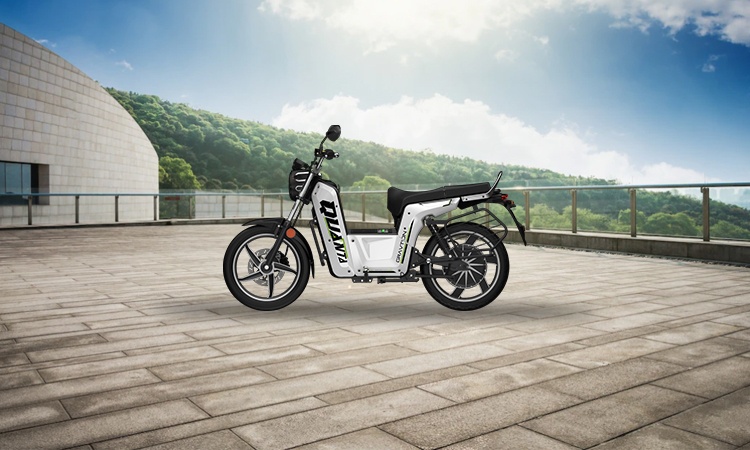What Are Electric Bikes, Electric bikes, commonly known as e-bikes, are a growing trend in the world of cycling, offering a modern twist to the traditional bicycle. So, what are electric bikes exactly, and why are they gaining popularity?
An electric bike is essentially a bicycle equipped with an electric motor that assists the rider’s pedaling efforts. The motor provides extra power, making it easier to ride uphill, cover long distances, or simply enjoy a smoother ride. Unlike scooters or motorcycles, e-bikes still require pedaling, but the motor makes the ride significantly less strenuous.
Key Components of Electric Bikes
- Electric Motor: The motor is the heart of an e-bike. It provides assistance by delivering power to the wheels. These motors can either be located in the front wheel, rear wheel, or centrally near the pedals. The power of the motor is typically measured in watts, and higher wattage means more power for the bike.
- Battery: The battery powers the motor and is rechargeable. Typically located in the frame, batteries vary in size and capacity, affecting how far an e-bike can travel on a single charge. Most e-bikes can travel between 20 to 80 miles on a full battery, depending on factors like the motor’s power, terrain, and speed.
- Controller: This device allows the rider to adjust the amount of power the motor provides. Riders can choose different levels of assistance, with some e-bikes even offering throttle control for a completely motorized experience.
- Pedal Assist System (PAS): This is a sensor that detects when the rider is pedaling and activates the motor to provide the appropriate amount of assistance. The harder you pedal, the more assistance the motor provides, allowing for a smoother, more effortless ride.
- Charger: An essential component for e-bike users, the charger allows you to recharge the battery after use. It is usually portable and can be plugged into any standard electrical outlet.
Types of Electric Bikes
Electric bikes come in several styles to cater to different needs and preferences. Some of the most common types include:
- City/Commuter E-Bikes: These are designed for urban riders looking for an efficient way to get to work or run errands. They often come with comfortable seating, baskets, or racks for carrying cargo.
- Mountain E-Bikes: Built for off-road adventures, these bikes have robust frames, suspension systems, and tires designed to handle rugged terrains while offering electric assistance.
- Folding E-Bikes: Ideal for people with limited storage space or those who need to transport their bikes on public transit, folding e-bikes can be collapsed for easy storage and portability.
- Road E-Bikes: These bikes are designed for long-distance rides on paved roads, combining the benefits of speed and power. They are often lighter than other types of e-bikes.
Benefits of Electric Bikes
- Reduced Physical Effort: One of the main advantages of an electric bike is the reduced effort required to ride. The motor provides assistance, making hills and long rides much easier for those who may not be in peak physical condition.
- Eco-Friendly: E-bikes are a sustainable form of transportation. They produce fewer emissions than cars and help reduce air pollution, especially in urban areas.
- Cost-Effective: While the initial purchase price of an electric bike may be higher than a traditional bike, the operating costs are lower than owning a car. There are no fuel costs, and maintenance is generally cheaper than that of a vehicle.
- Speed and Efficiency: E-bikes allow you to travel at higher speeds without exerting extra effort, making them an excellent choice for commuters looking to save time.
- Health Benefits: While e-bikes require less physical effort, they still provide a workout. Riders can control how much assistance they get, so it’s possible to use the motor sparingly or choose a more strenuous workout.
Are Electric Bikes Legal?
In most places, electric bikes are legal, but there are regulations that vary depending on the country or region. Typically, e-bikes with motors below a certain power (often around 750 watts or 1 horsepower) are classified as bicycles and are subject to similar rules as traditional bikes. However, certain areas may have restrictions on where e-bikes can be ridden, such as on sidewalks or bike paths, and some may require helmets.
Conclusion
In summary, electric bikes provide a practical, eco-friendly, and enjoyable way to travel. Whether you’re using them for commuting, leisure rides, or outdoor adventures, e-bikes are an excellent alternative to traditional bicycles and even cars. With their increasing affordability and widespread availability, it’s no surprise that electric bikes are quickly becoming a favorite mode of transportation for people worldwide.
You Might Also Like These:

